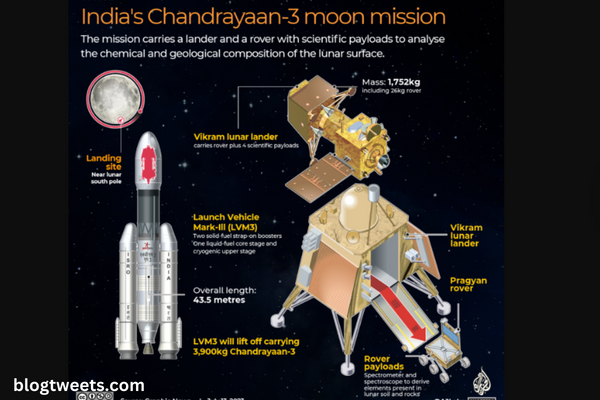Live CPI report updates: Inflation falls to 4.9%; core consumer price increases remain high

In April, inflation decreased for the ninth consecutive month as rising petrol prices were offset by sustained moderation in grocery prices.
A measure of underlying inflation that accounts for longer-term trends remained high.
The consumer price index published by the Labour Department shows that consumer prices rose 4.9% from a year earlier, down from 5% in March and a 40-year high of 9.1% last June. Since April 2021, that represents the smallest yearly growth. Prices increased 0.4% on a monthly basis after rising 0.1% in March.
The inflation report on Wednesday was mixed for American consumers and drivers. Just in April, petrol prices increased by 3%. In contrast, the cost of groceries decreased for a second consecutive month. After declining for nine months, the price of used cars increased by 4.4%. The cost of renting increased, but more slowly.
However, the report showed some indications that inflation is still slowing down. After four consecutive months of price hikes, hotel costs fell 3% in April and airline fares fell 2.6%.
Gregory Daco, Chief Economist at EY-Parthenon, said, “It’s sticky and bumpy, but make no mistake, inflation is cooling.”
Fed raises rates in May: The Fed raises rates by 0.25 percentage points but suggests a pause in the fight against inflation.
The rate of inflation drops to 5% in March, which is a nearly 2-year low, but core consumer price increases go up.
What distinguishes the core CPI from the CPI?
Following a 0.4% gain in February, core prices, which don’t include volatile food and energy costs and instead track longer-term trends, grew by 0.4% in March. As a result, the annual rise was reduced from 5.6% to 5.5%.
The nation’s journey back to normal inflation rates will be uneven, according to the research. Prices in general still showed a significant rise from the previous month. Even though supply chain constraints caused by COVID have been lessening, several items saw price increases last month. After nine straight drops, prices for used cars and clothing both rose.
Several of these price rises halted in April, despite the fact that service expenses are expected to climb as Americans resume travelling and dining out more regularly.
Will the Fed keep raising interest rates?
The Federal Reserve this week signalled that it will likely suspend its aggressive campaign that has raised a key interest rate by 5 percent during the past 14 months, despite the fact that inflation has only slightly decreased since that time. According to Fed officials, the failure of Silicon Valley Bank and two other banks will likely result in tighter lending requirements, a slowdown in the economy, and reduced inflation, which will reduce the central bank’s workload.
The CPI report, according to Capital Economics economist Andrew Hunter, maintains the Fed on track to stop raising interest rates, but it also demonstrates that persistently high levels may prohibit Fed officials from reducing rates to confront a weaker economy for a longer length of time.
What does the petrol price future hold?
Although petrol prices rose in April, they are still 12.2% lower than they were a year ago. Pump costs have dropped once more in recent weeks. Tuesday saw a decrease in the national average price of regular unleaded petrol, which was $3.60 per gallon.
Will the price of food decrease?
The price of groceries fell by 0.2%, marking the second consecutive monthly decline, and the annual increase slowed to 7.1% from 8.4%. Due to a slowing in global demand, commodities like wheat and maize have seen a decrease in price recently.
After a string of significant price hikes brought on by the avian flu, the price of eggs decreased by 1.5% in April. Despite this, prices have increased by 21.4% in the last year. Prices for fish and seafood, pork, and bread all decreased by 1.2%, 0.7%, and 0.3%, respectively.
However, some expenditures went up anyway. Prices for chicken and raw ground beef rose by 0.5% and 0.6%, respectively.
Prices at restaurants are now up 8.6% annually after a 0.4% increase.
Rent-related inflation?
Once more, rent was the main cause of inflation, although the rise remained gradual. Rent increased by 0.6% in April, up from 0.5% in March but below a streak of higher increases. The growth rate for the year remained 8.8%. Based on new leases, economists anticipate a decline in rent, but this trend has been reluctant to spread to current leases.
After a wave of wholesale price rises, retail prices for used cars increased by 4.4%, but they are still down 6.6% annually. After a pandemic-related run-up that raised expenses by nearly a third, prices have been falling. Additionally, garment costs rose 0.3%.
Prices for several commodities decreased when supply-chain bottlenecks got better. Prices for new cars decreased by 0.2%. Appliance prices fell 1.9%, while furniture and bedding expenses fell 0.5%.
Even if Americans resumed their pre-COVID travel and other activities, some services became a little bit less expensive in the meanwhile. Hotel prices decreased 3%, and airline fares dropped 2.6%. Additionally, medical services fell by 0.1% after falling by 0.5% the prior month.
winners and losers in inflation
Borrowing has become more expensive as a result of the Federal Reserve’s ten straight rate increases, whether you’re using a credit card to purchase an appliance or a loan to finance a vehicle.
A new credit card’s annual percentage rate has increased from just over 16% to almost 24%. The 30-year mortgage rate for Freddie Mac has jumped from 3.6% to 6.4% during the past year. According to a Bankrate calculator, your monthly payment would increase by 31%, or around $615, if you put down $90,000 and got a $450,000 mortgage.
Economists warn that even after the Fed raised its benchmark interest rate by a quarter percentage point, the full effects have not yet been seen because the economy can take up to a year to adjust.
Mortgage interest rates
Although there aren’t many properties available for purchase and the job market is still strong, prices for homes decreased marginally in February and March compared to the previous year.
If consumer prices continue to fall, rates may decrease much more before the end of the year, persuading the Federal Reserve to hold off on raising interest rates and luring buyers and sellers into the market.
According to Lawrence Yun, chief economist for the National Association of Realtors, “mortgage rates are likely to decline lower later in the year as consumer price inflation calms down and the Fed shifts its thinking from possibly loosening to tightening the monetary policy.”
Since the Federal Reserve started raising interest rates more than a year ago to tamp down inflation, mortgage rates have more than doubled. However, the most recent rate increase of a quarter point shouldn’t have an effect on mortgage rates because the increase was anticipated, according to Taylor Marr, Redfin’s deputy chief economist.
From a seasonally adjusted annual rate of 6.5 million homes sold in January 2022 to 4.44 million in March 2023, the number of home sales has decreased.
How will the recent Fed action impact the housing market? Housing and the Fed Rate Hike.
The best lenders are listed here if you want to purchase a home.
Index of Core Consumer Prices
Without including the costs of energy and food, which are frequently the most volatile parts of the broader consumer price index, the core consumer price index is a measure of how consumer prices change. The core consumer price index for April is predicted by economists to show price growth of 0.3% from March and 5.4% from year-over-year.
Since when has the Fed been increasing interest rates?
Last week, the Fed increased its benchmark short-term interest rate by a quarter of a percentage point, marking its eleventh consecutive rate increase. However, it hinted that it would hold off on further hikes while it waits to see if its series of rate rises and the stricter lending requirements put in place as a result of Silicon Valley Bank’s failure will help to contain inflation.
Silicon Valley Bank: Investors, customers, and regulators were alarmed by the California institution’s failure.
Report on Fed inflation
The Federal Reserve’s favoured method of measuring inflation, the Personal Consumption Expenditure Price Index, is released on May 26.
On June 13, the upcoming data on the consumer price index is expected to be made public.
What is a suitable rate of inflation?
The target inflation rate set by the Federal Reserve is 2%. The 2% objective, according to the report, “is most consistent with the Federal Reserve’s mandate for maximum employment and price stability.”
S&P 500
Following Wednesday’s 8:30 inflation report, which revealed that inflation increased less than anticipated in April, stock indices were mixed in late morning trade. The S&P 500 increased 0.21%, the Nasdaq futures increased 0.65%, and the Dow Jones Industrial Average decreased by less than 1%.
10-year Treasury note
After the highly awaited report revealed that consumer inflation was 4.9% last month, down from 5% in March and the lowest level in two years, prices for 10-year Treasuries increased 3.45%, driving yields lower. That performed marginally better than anticipated, enabling investors to increase their bets that the Federal Reserve will refrain from raising interest rates and give the economy some breathing room. Prices and yields move in the opposing directions.
% of inflation
Inflation in March was 5% on a yearly basis. As prices dropped at the petrol pump and the grocery shop, the rate of price increases reduced for the ninth consecutive month.
Describe stagflation.
Prior to today’s inflation news, stagflation concerns were said to be brewing on Wall Street, according to Reuters last week. The CPI data was expected to show if the Federal Reserve was successful in containing inflation without harming growth, according to investors.
When inflation is high and economic growth is weak, the result is stagflation. Although there is no official definition or cutoff point for the term, it includes factors like rising unemployment and a weakening economy as prices rise.
An increase in the price of raw materials, which results in inflation and lower disposable income for consumers, is one reason that might contribute to stagflation.
According to Reuters, the prospect has loomed big in investors’ minds while being far from certain because last year’s inflation increase compelled the Fed to begin an aggressive campaign to raise interest rates, which many have predicted will lead to a recession. Some people also think that the recent failure of a few regional banks may have a negative impact on lending and delay growth, causing the Fed to decrease rates before inflation can be controlled.
Here are some past effects of stagflation:
What distinguishes the overall consumer price index from the core consumer price index?
The core consumer price excludes the expenses of energy and food, which are particularly volatile, even though the Consumer Price Index tracks how average prices change over time for a variety of goods and services.
CPI definition
The Consumer Price Index (CPI) provides an overview of how prices for a range of goods and services change generally over time.
Interest rates and the Fed: The Federal Reserve may decide to stop after raising its benchmark rate.
Banks make borrowing more difficult: Following Silicon Valley Bank’s bankruptcy, standards have been tightened








